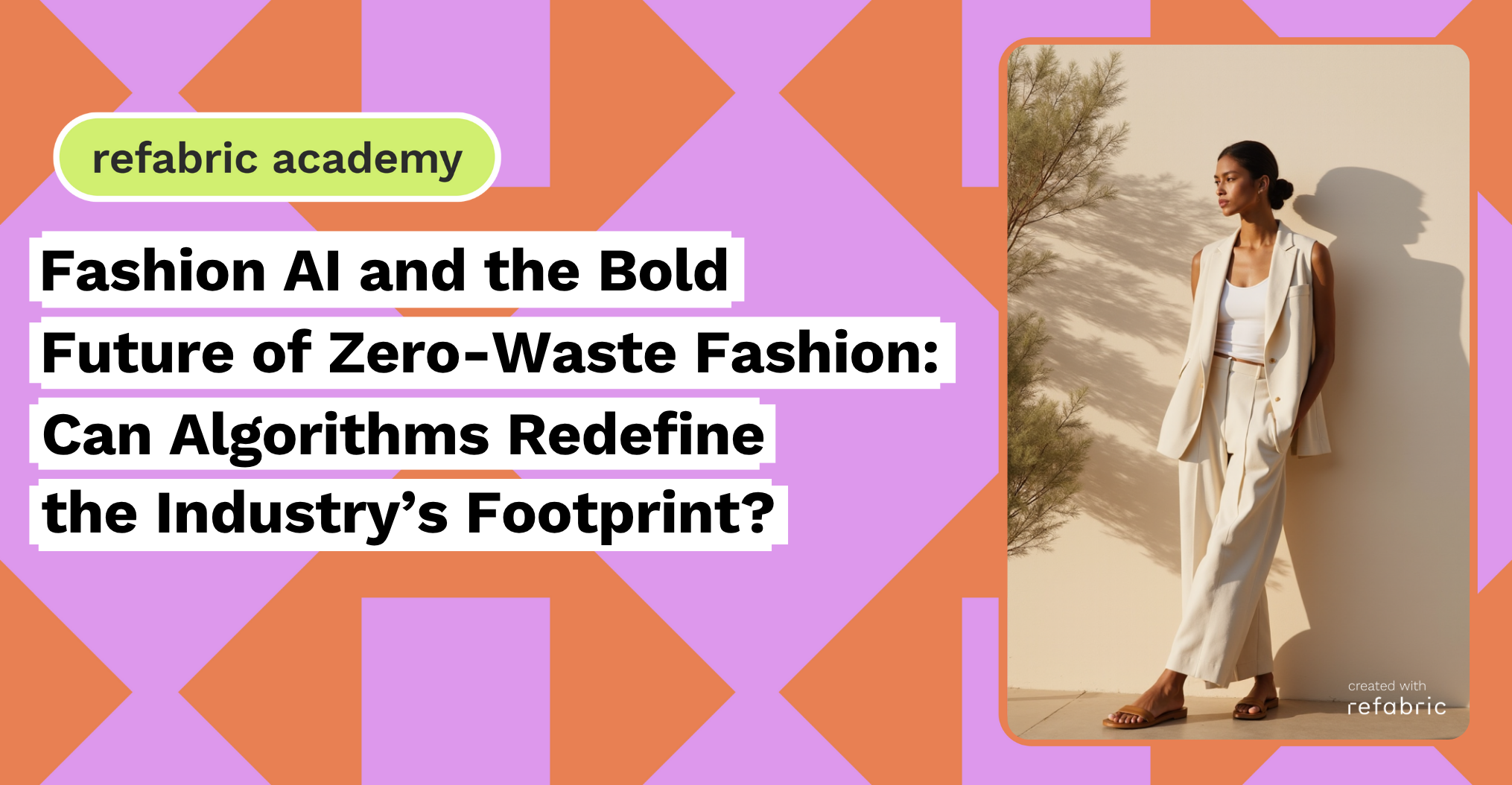Although fashion AI is often praised for its ability to streamline workflows and boost creativity, one of its most profound impacts may lie in its potential to drive zero-waste fashion. As the fashion industry grapples with mounting environmental pressure, the marriage of AI and sustainable design is emerging as a game-changing alliance. Through smarter production methods, predictive analytics, and intelligent design, algorithms are poised to radically reduce waste and redefine the industry’s ecological footprint.
Fashion’s Waste Problem: A Catalyst for Change
Fashion is one of the world’s most wasteful industries, generating millions of tons of textile waste annually. From unsold inventory to fabric offcuts and overproduction, inefficiency has long been woven into the industry’s fabric. Traditional practices are not only environmentally taxing but increasingly out of step with consumer values and regulatory pressures.
Zero-waste fashion aims to change that but until recently, scaling these practices posed logistical and creative challenges. That’s where fashion AI steps in, offering the precision and scalability needed to make waste-free fashion both feasible and fashionable.
Smart Design for a Circular Future
At the heart of zero-waste fashion is thoughtful, data-driven design. Fashion AI platforms analyze fabric behavior, garment construction, and cutting layouts to create designs that minimize or eliminate leftover material. Instead of relying on trial and error, designers can use AI-generated patterns that fit perfectly within a textile’s dimensions, optimizing every inch.
Some tools even simulate how garments behave on the body, allowing designers to experiment virtually and avoid producing unnecessary samples. This digital prototyping not only accelerates development but drastically reduces material waste during the creative process.
Predicting Demand to Prevent Overproduction
Overproduction is one of the fashion industry’s biggest contributors to waste. Fashion AI addresses this challenge by leveraging predictive analytics to forecast demand with impressive accuracy. By analyzing historical sales, market trends, and even real-time consumer behavior, AI helps brands determine exactly how much to produce, where, and when.
This minimizes unsold stock and markdown cycles, resulting in a leaner inventory model. For sustainable brands, this also aligns with the principles of slow fashion, producing intentionally, not impulsively.
Reinventing Supply Chains with Fashion AI
Zero-waste fashion isn’t just about what gets designed, it’s also about how it’s made and distributed. Fashion AI enhances supply chain transparency by tracking material usage and waste in real time. Brands can identify inefficiencies and make adjustments on the fly, such as reallocating surplus fabric to other product lines or redirecting overstock before it reaches landfills.
Additionally, AI can recommend local or sustainable material sources, reducing a garment’s carbon footprint before it even hits the cutting table. By turning data into decisions, fashion AI allows brands to design with conscience and clarity.
Enabling Upcycling and Circular Design
Another exciting frontier lies in AI’s ability to facilitate circular fashion systems. Algorithms can scan existing inventory and suggest upcycling opportunities, turning unsold stock or discarded garments into new, desirable products. Designers can upload fabric swatches or garment data and receive AI-powered recommendations for reuse, resizing, or reimagining pieces into entirely new silhouettes.
This kind of intelligent upcycling transforms waste into raw material, closing the loop and adding creative value where there once was loss.
Fashion AI: A Blueprint for Scalable Sustainability
What makes fashion AI so powerful is its ability to make zero-waste design scalable. In the past, achieving minimal waste required labor-intensive processes and high costs, making it difficult to apply across mass-market collections. With AI, however, brands of any size can access the tools to design smarter, produce leaner, and minimize their footprint without sacrificing creativity or commercial viability.
As sustainability becomes a business imperative, fashion AI offers a blueprint for lasting change. It’s not just about reducing waste, it’s about rethinking how fashion is conceived, crafted, and consumed.
A Greener Future Powered by Algorithms
While zero-waste fashion once seemed niche, fashion AI is rapidly bringing it into the mainstream. With algorithms guiding design, production, and supply chains, the industry has the tools to not just reduce its footprint but to redesign it entirely.
The question is no longer if fashion AI can support sustainability. It’s how quickly the industry can adapt. And for brands willing to embrace this transformation, the path forward is clear: cleaner, smarter, and far more sustainable.
